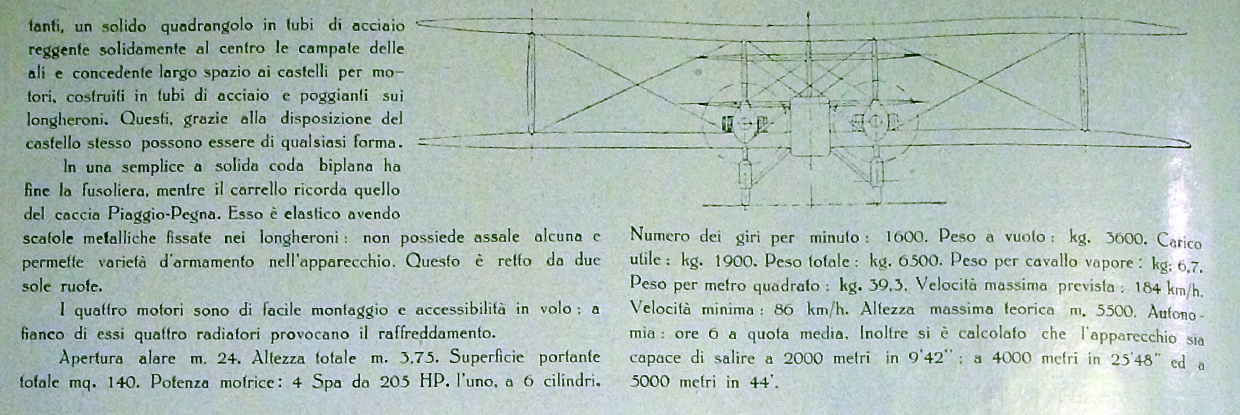'Pegna corsa' - Giovanni Pegna's Racing Aircraft
Fortunately, dott. ing. Giovanni Pegna recorded his thoughts on racer design in 1932. Pegna referred to his non-floatplane designs as 'idrovolante ala scafo' (wing-hull seaplanes) in his paper, Alcune Idee Sugli Idrovolanti da Corsa (Some Ideas on Racing Seaplanes). [1]
Racers were designed exclusively for the prestigious Schneider Trophy. The number of designs for each contest may seem excessive. But Pegna explains his process - various possibilities being sketch out (including some 'straw men'), potential avenues are then fleshed-out, before zeroing in on finishing design work on the most promising concepts. This is not an uncommon approach but it is refreshing to have an engineer freely describe his entire design process - including throwing out the lemons
The Style of 'Pegna corsa' Designations
'Pegna corsa' just means 'Pegna racer'. A wide range of designation presentations will be seen - for example: PC-7, PC.7, P.C.7, and the like. Here, I have followed Giovanni Pegna's own style and used 'Pc. x' exclusively. In presentation, this may look a little odd to modern eyes but, here, I bow to the preferences of dott. ing. Pegna.
________________________________________________
[1] Alcune Idee Sugli Idrovolanti da Corsa, published in Rivista Aeronautica, Anno 8, No. 6 (giugno 1932), Roma, pp. 461-516
________________________________________________
Pegna's Pc. Series of Racing Aircraft Designations
Pegna Pc. 1 - (Project) Flying boat study for 1921 Schneider Trophy
- Pc. 1: Shoulder-winged monoplane; tilting engine mount for T/O
- Pc. 1: 1 x (??) hp (??) engine; span 9.20 m
Pegna Pc. 2 - (Project) 1923; Piaggio P.4 for 1924 Schneider Trophy
- Pc. 2: Conventional, low-winged monoplane; twin floats
- Pc. 2: 1 x (??) hp (??) V12 tractor engine; span 10.11 m
- Pc. 2: Concept refined into Pc. 3 study (below) & Pc. 5 - Pc. 7
Pegna Pc. 3 - (Project) 1923; Piaggio P.5 (? desig.unconfirmed)
- Pc. 3: Conventional, low-winged monoplane; twin floats; x 1*
- Pc. 3: 1 x (??) hp (??) V12 tractor engine; span 9.35 m
-- * Construction was well advanced on Pc. 3 at cancellation
- Pc. 3: Penga regarded this as ultimate refinement of Pc. 2**
-- ** With particular attention given to reducing frontal area
Pegna Pc. 4 - (Project) 1927; study for 1929 Schneider Trophy
- Pc. 4: Low-winged flying boat racer; * push-pull fuselage pod
- Pc. 4: 1 x tractor V12 engine/1 x pusher V12; span 11.50 m
-- * Stabilizer floats were to retract into the main, central float
- Pc. 4: Adv'd concept w/ buried cockpit; did not satisfy Pegna
Pegna Pc. 5 - (Project) 1927; study for 1929 Schneider Trophy
- Pc. 5: Strutted low, slightly gull-wing monoplane flying boat
- Pc. 5: 1 x (??) hp (??) V12 tractor engine; span 8.15 m
- Pc. 5: Tilting engine for T/O; essentially refined Pc.1 concept
Pegna Pc. 6 - (Project) 1927; study for 1929 Schneider Trophy
- Pc. 6: Strutted low, constant dihedral monoplane flying boat
- Pc .6: 1 x (??) hp (??) V12 tractor engine; span 9.85 m
- Pc. 6: Similar to Pc. 5 but with an added tail-mounted screw
Pegna Pc. 7 - 1929 idrovolante ala scafo with hydrovanes; x 2
- Pc. 7: aka Piaggio-Pegna Pc.7; aka Piaggio P.7
- Pc. 7: (As envisioned) With retractable planing 'wing-hull'
- Pc. 7: (As planned) Hydrovanes; 1 x 1,000 hp Fiat AS.5 V12
- Pc. 7: (As built) Hydrovanes; 1 x 800 hp I-F Asso 500 V12
- Pc. 7: MdA order; 24 March 1928; MM126 and MM127*
-- * Neither actually flew but both airframes were completed
_________________________________________________
No doubt, hesham will have more to add when he returns. Can others fill in missing details or have other Pegna projects to contribute?


